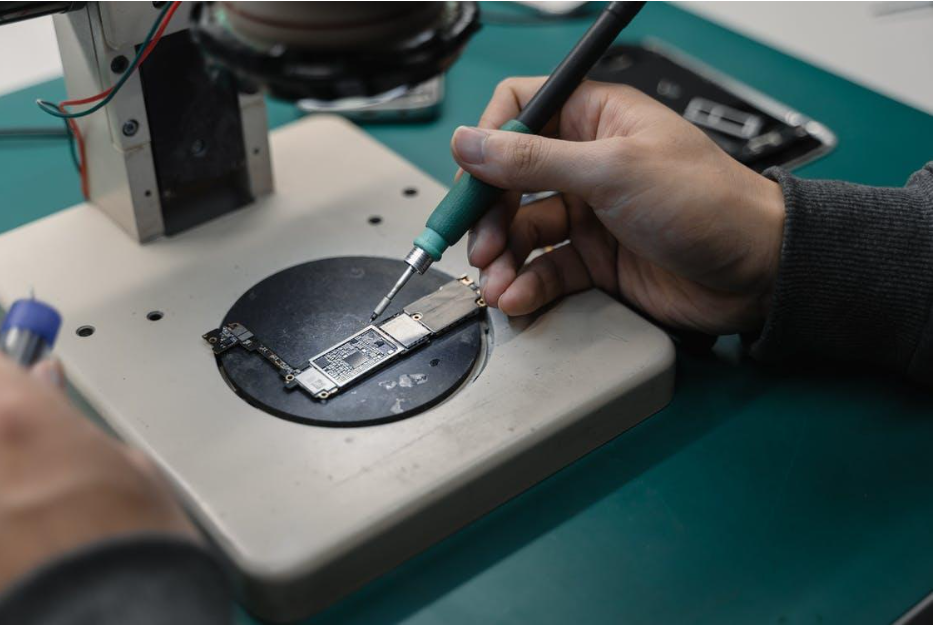Flexible PCBs are revolutionizing the way we build electronic devices. They are a lot more versatile than rigid circuit boards. They can be used differently and adapted to situations where rigid circuits cannot be used.
Flexible PCBs have many applications with benefits ranging from initial prototype to final product. Moreover, today’s flexible PCBs are more accessible than ever to design; you only need your imagination. That is why it is only natural to wonder what applications they can be put to work in besides just the standard rigid through-hole boards you are used to frequently seeing today.
Here, we will explore several flexible PCB applications that offer varying levels of complexity and ideas to get you started.
Table of Contents
The Flexible Revolution: 5 Flexible PCB Applications
Medical Devices
Medical devices are one of the most challenging industries for flexible PCBs. Medical devices must be sterile and able to withstand harsh environments, including extreme temperatures, humidity, and exposure to blood. Flexible PCBs also have to be thin enough to fit into tight spaces in medical devices, such as heart pacemakers or neurostimulators. They can be used to provide the power to microcontrollers, measure signals from sensors, or provide an interface between the user and the device.
Here are some examples of how flexible PCBs are used in medical devices:
Flexible PCBs for microcontrollers are often used in wearable health trackers such as fitness watches and smartwatches. These devices typically contain a small microcontroller with sensors to monitor your heart rate and other vital signs. The flexible PCB provides power to the MCU through a flexible cable that connects it with a watch band. The flexible cable also carries data from the MCU to components on the watch face so that you can see your heart rate and other measurements on-screen.
Flexible PCBs for sensors are also used in many medical devices, including blood pressure monitors, glucose meters, and pulse oximeters, among others. These devices typically have one or more probes placed on an extremity such as your finger or earlobe to measure signals from your body such as blood flow or heart rate. The probes can be connected directly to a wired connection point on the device using slip rings, but they are usually connected using a flexible PCB with some capacitive contacts embedded in it. These capacitive contacts are used to pick up signals from your body.
Aerospace
Flexible PCBs in aerospace applications are a growing market. Flexible PCBs are used in various ways: for example, to protect the wiring harnesses or fiber optic cables in aircraft and spacecraft. The replacement of rigid printed circuit boards with flexible ones will impact the structure and design of aerospace systems.
The reasons for using flexible PCBs in aerospace applications include:
-
Less Weight
Compared to rigid boards, flexible PCBs weigh less which is essential for aircraft applications where weight is an important factor.
-
Reduced Space Requirements
Flexible boards can be flat or bent into curved shapes, so they take up less space than rigid boards. This is particularly useful on smaller aircraft because it reduces their overall size, which makes them easier to transport and store in hangars or on board ships.
-
Improved Reliability
Because there are fewer mechanical stresses placed upon flexible boards than on rigid boards, there is less chance of them breaking under pressure, making them more reliable than rigid boards.
Automotive
In the automotive industry, high-performance flexible PCBs are used in a wide range of applications. Flexible PCBs have become an integral part of the car’s electronics system, from cameras to sensors and other components. As the demand for smart cars increases, so does the need for more sophisticated electronics systems.
One of the main advantages of flexible PCBs is that they can be bent and curved to fit into tight spaces. This allows them to be used in automotive applications where space constraints are an issue. For example, if you want to integrate a sensor circuit into your car dashboard, it would be much easier to do so with a flexible PCB than with a rigid one.
Military
With the development of a high-temperature flexible printed circuit board (FPCB), we can now produce high-quality, high-performance military applications such as aircraft, missiles, and tanks. These flexible PCBs are more suitable for military applications in anti-vibration, anti-impact, and anti-electromagnetic interference.
They are used in a wide range of military applications, including:
- Military hardware such as radios, missile guidance systems, radar equipment, and other electronics
- Military vehicles, such as tanks, helicopters, and missiles
- Aircraft cockpit controls and displays
Telecommunications and Networking
The telecom industry has always been a leader in developing new technologies. The rapid growth of the Internet, wireless communication, and cloud computing has resulted in a tremendous demand for flexible printed circuit boards. Due to their mission-critical nature, these systems must be able to withstand extreme temperatures, rough handling, and high-speed data transfer.
Flexible PCBs in telecommunications and networking applications are often used as interconnect substrates between circuit boards and connectors such as RJ45 plugs or coaxial connectors on base stations. The circuits on these boards connect to other components such as microcontrollers or data converters through connectors like these that are mounted on the edge of the board.
Summing Up
The PCB industry is vibrant and bustling, catering to a market with plenty of room for growth, given the rise in machine learning and IoT applications. New products will surely propel the industry forward in the coming years, but flexible PCBs have become significant players in their own right. Whether smart sensors on wearable devices or other smart systems, flexible PCBs are likely to play an important role. They are not just the future—they are here now.
While the sky is truly the limit when it comes to experimentation with flexible PCBs, we hope this guide has at least inspired your next design. If you are interested in learning more about flexible PCB, explore by Hemeixin’s HDI PCB design guidelines.

